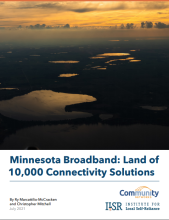Superior, Wisconsin Takes Substantial Step Toward Municipal Fiber
Just a year after city leaders of Superior, Wisconsin (pop. 26,000) passed a resolution declaring fiber optic cabling critical infrastructure, officials are beginning to put the city’s money behind an action plan. In August, a majority of City Council members voted to adopt a plan to develop a city-owned fiber network and Superior Mayor Jim Paine proposed to reserve the bulk of the city’s American Rescue Plan federal relief funds to back the project.
The recent 8-2 City Council vote gave the green light to move forward with Connect Superior – a plan to construct open access, fiber optic broadband infrastructure reaching every resident, community anchor institution and business in the city.
As Mayor Paine plans to budget no less than $10 million of the city’s $17 million in Rescue Plan funds to finance the project, Superior’s legislative and executive officials are largely united

behind the decision to pursue the path laid out in a Broadband Master Plan [pdf] developed for the city by EntryPoint Networks.
City Councilors’ adoption of the Master Plan is a significant step forward, even as there are still numerous motions the City Council will need to approve in order for municipal fiber to become a reality.
The next phase of the project involves designing and planning the network and hiring the contractors who will build it. City Council members will have to approve every contract with every consultant, design, and engineer firm along the way; as well as the Mayor’s American Rescue Plan budget in order to award the funds necessary to get the project rolling.



